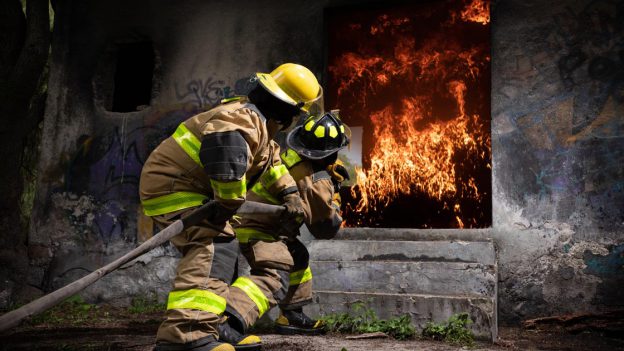After three consecutive La Niña wet weather patterns, your business might not have bushfire risks front of mind.
However, vigilance is needed. Above average rainfall and devastating floods have boosted vegetation and fuel-load growth in parts of our nation.
According to the National Council for fire and emergency services (AFAC), destructive and deadly fires can still happen even though most of Australia shows ‘normal’ fire potential for this summer. As well, much of NSW, parts of Western Australia, the Northern Territory and Tasmania will have above-normal fire potential as this map shows.
It’s important to know your local conditions as bushfire seasons differ across the country, says the Bureau of Meteorology.
Fire remains one of the most common risks to businesses
Three years ago, bushfires affected 26% of Australian businesses over time, says Roy Morgan Research. Those most impacted were in NSW, Victoria and Queensland comprising eight in 10 businesses overall.
Workplace health safety and legal and financial implications may occur if your business doesn’t address bushfire risk management.
Bushfire risks to business include:
- Disruption to business continuity, including closing your doors due to fires and associated smoke issues
- Unexpected or unplanned impacts on employees
- Extended interruption to cashflow
- Inability to meet duty-of-care obligations and provide services.
Fire preparation steps
Often businesses that have survived a major bushfire had thought they were ready and prepared for the following destruction and emotional fallout. However, this was often not the case. So, please refer to these tips to improve and update your approaches.
- Identify what you’ll need to do to better prepare for bushfires
- Create an itemised checklist to deal with the gaps and weaknesses you’ve identified
- Test fire detection and protection systems equipment
- Improve your fire safety culture through updated policies and procedures for safety and emergency business planning
- Ensure you train staff to use fire extinguishers
- Regularly practice an evacuation plan
- Ensure you have plans to protect your data such as backing it up to the cloud/offsite.
Does your business premises maximise passive fire protection? The idea is to compartmentalise the building into zones to help contain or slow the fire’s spread. This means fire-rated walls, floors, shafts, ceilings, etc. Be mindful of how and where utilities enter your premises, such as through electrical and data cable, duct work, air conditioning pipes and plumbing.
Be sure to check your state or territory’s fire safety installation laws for buildings, such as this one for Queensland. And, here’s a good overview of fire safety at work – including laws and regulations. Plus, get updated on the latest fire warning system.
Steps to take during a fire
When a fire approaches, have your designated fire wardens monitor and manage the situation until emergency services arrive. A typical fire safety procedure would involve calling 000, activating fire alarms and operating fire extinguishers.
If your business needs to evacuate, first aid organisation St John advises to:
- Remain calm
- Alert staff and emergency services
- Have fire wardens ensure all staff and visitors leave via a safe evacuation route to a muster point, then do a head count in an assembly area
- Close windows and doors, switch off power
- Don’t re-enter the building until authorities declare it safe to do so.
If you can’t evacuate, St John recommends you:
- Alert emergency services
- Not use lifts nor open doors if they feel warm/hot
- Turn off ventilation systems
- Place wet towels and clothing under doors, windows and vent openings to slow the spread of fire and smoke.
And after a fire
Check people are safe first and don’t enter your premises until firefighters say it’s safe. Then:
- Note in your phone or a notebook everyone you speak to, their contact details and conversations
- Photograph and video record the damage as much as possible, but avoid touching soot and dirty water which contains toxins
- Keep receipts of expenses
- Contact us, as your broker, so we can support your claim processing
- Notify your landlord or property manager if you have one
- Update your business partners, credit card companies, suppliers and clients with information
- Negotiate new deadlines, if required
- Remove valuables and secure your property from thieves
- You may need to turn off utilities and/or update providers with your contact information.
Business insurance cover for fire, storm damage, flood and major perils
Appropriate insurance can make the difference between your business being able to continue operating after a major natural disaster or not. Let us help customise a policy package that addresses your company’s risk profile.



